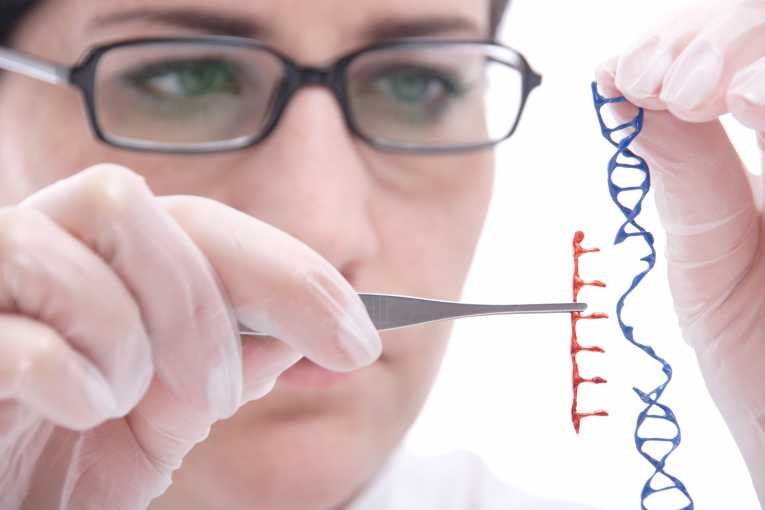Genetic Engineering: Hope for Humanity
Hello readers,
Welcome back from the holidays and Happy New Year. I spent the holidays with my friend who had finished a program in biomedical engineering two years ago. What freaked me most was that he was still working all through the break. I had always been interested in genetic engineering when I first heard of it in a biology class in school but never had a flair for it anyway. My friend made my interest in genetic engineering grew again and being a very inquisitive person, on one of those days, I followed him to the laboratory where he works, one of the biggest in my city. This made me even more interested in the topic. Here's what I found out.
Genetic Engineering: What It Is
The 21st century has witnessed the rise of all whole new domain of molecular biology, a hope for humanity, called Genetic Engineering. Genetic engineering can simply be defined as the process in which the genome of an organism is intentionally modified. This simply means that a segment of a DNA is isolated from an organism and then put in another organism. The gene amplifies in the second organism. The second organism is thus called a genetically modified organism.
Herbert Boyer and Stanley Cohen created the first genetically modified organism in 1973. The wide applications of genetic engineering have made it a very valuable procedure among scientists. Genetically modified mice are the most commonly genetically engineered animal model and they have effectively been used to study and model cancer, obesity, coronary heart disease, ageing, Parkinson’s disease and arthritis. In the field of medicine, genetic engineering is applied in the production of drugs, in gene therapy for the treatment of diseases such as albinism and in the production of artificial hormones such as insulin, human growth hormone and follistim(for the treatment of infertility). Genetic engineering can also be applied in forensic studies. The DNA of concerned individuals can be amplified via genetic engineering and thus can be used to solve issues arising from paternity cases, family disputes and crime scenes.
Steps involved in Genetic Engineering
Five major steps are involved in genetic engineering. These include:
- Isolation
- Insertion
- Translocation
- Transformation
- Separation
Isolation
Isolation simply involves the identification and cleaving of a segment of an organism’s gene. That is, the particular segment of that organism’s gene is isolated from the organism. An enzyme called restriction endonuclease is very vital for this process. Restriction endonucleases recognize a particular sequence of a DNA and cleave that sequence.
Insertion
This is the transfer of the cleaved genes into a suitable vector. A vector is a suitable DNA molecule which can serve as a carrier of a segment of foreign DNA molecule and can also be able to replicate in a suitable host organism.
DNA can be inserted into the vector by:
- Transformation (For natural cells like Escherichia coli)
- Electroporation (For cells with cell walls.)
- Genetic gun (DNA is coated with a plate of gold and propelled into the cells)
- Microinjection(Puncture of the vector’s cell membrane by glasses pipettes and then DNA is inserted)
Translocation
Involves the transfer of the vector to the organism (usually Escherichia coli) which is to be modified.
Transformation
It is the transformation process that occurs in the organism to be modified. After transformation, the organism becomes a genetically modified organism.
Separation
This involves separation of the genetically modified organism from the organisms which were not successfully modified.
Vectors - Molecular Vehicles
A vector, as earlier defined, is a suitable DNA molecule which can serve as a carrier for a segment of foreign DNA molecule and can also be able to replicate in a suitable host organism. By this, they act as vehicles which transfer a gene from one organism into another organism.
A suitable vector should possess the following properties.
- The foreign DNA should be easily introducible into the vector.
- The vector should be easily introducible into the host organism.
- The vector should be able to replicate independent of the host genome.
Three major vectors are used in genetic engineering. These are plasmids, bacteriophages and consmids.
Plasmids
Plasmids are independent DNA molecules which are not part of a cell’s chromosomal DNA. Plasmids are most commonly found in bacteria and yeast. The plasmid most frequently used in genetic engineering are derived from Escherichia coli.
Bacteriophage
Bacteriophages are viruses that attack bacteria. Bacteriophage lambda is the one most commonly used in genetic engineering.
Cosmids
Cosmids contain properties of both plasmids and bacteriophages. They are mostly used for cloning large DNA fragments that cannot be cloned with plasmids or bacteriophages.
Conclusion
The field of genetic engineering offers so much hope for humanity. From the manufacture of insulin to the study of cancer, the importance of genetic engineering cannot be over emphasized.



Hi! I am a robot. I just upvoted you! I found similar content that readers might be interested in:
https://en.wikipedia.org/wiki/Molecular_cloning
Bro good schooling thanks
Thank you for reading
This post has received a 0.22 % upvote from @drotto thanks to: @steemstem-bot.
Thanks
Well done! This post has received a 7.69 % upvote from @litasio thanks to: @steemstem-bot. Whoop!
If you would like to delegate to the @LitasIO you can do so by clicking on the following link: 10SP
İntervention of genom helps us to cure genetic based diseases.
You are right. Especially genomic sequencing which not only help to treat conditions, but also prevent disease in healthy people